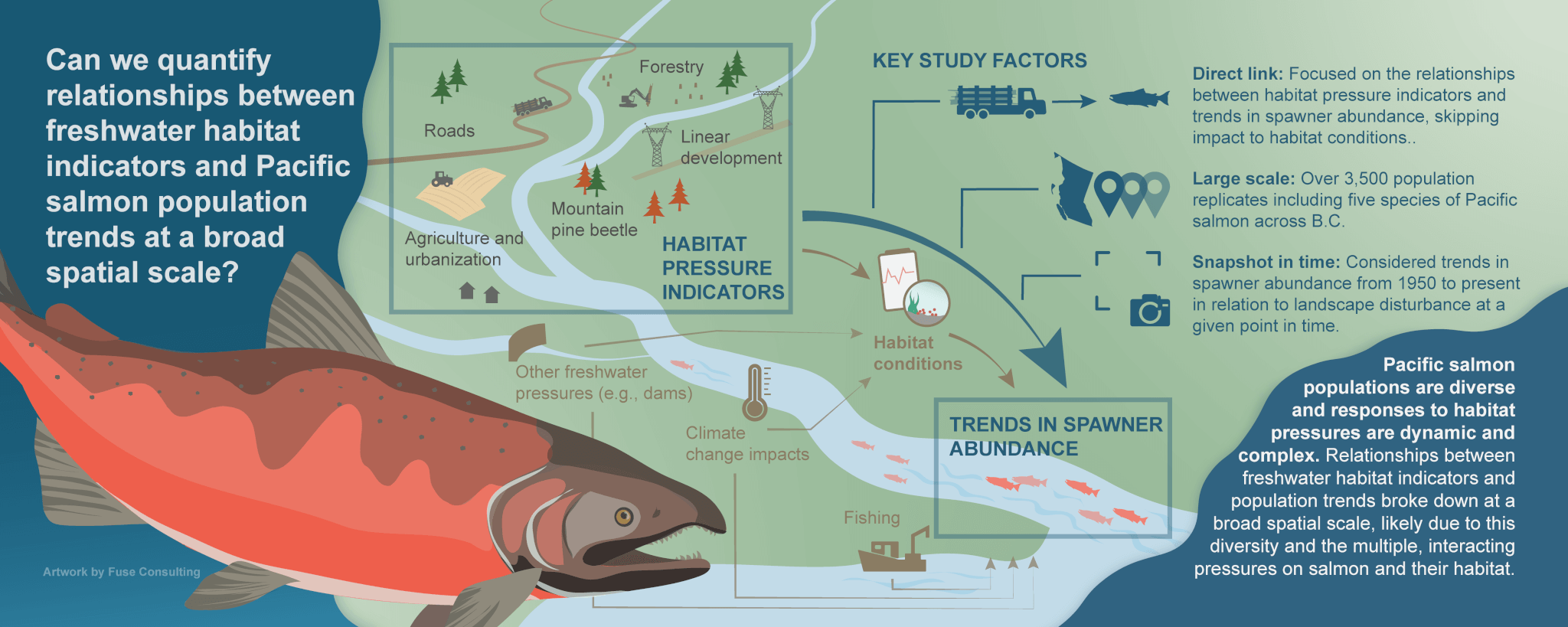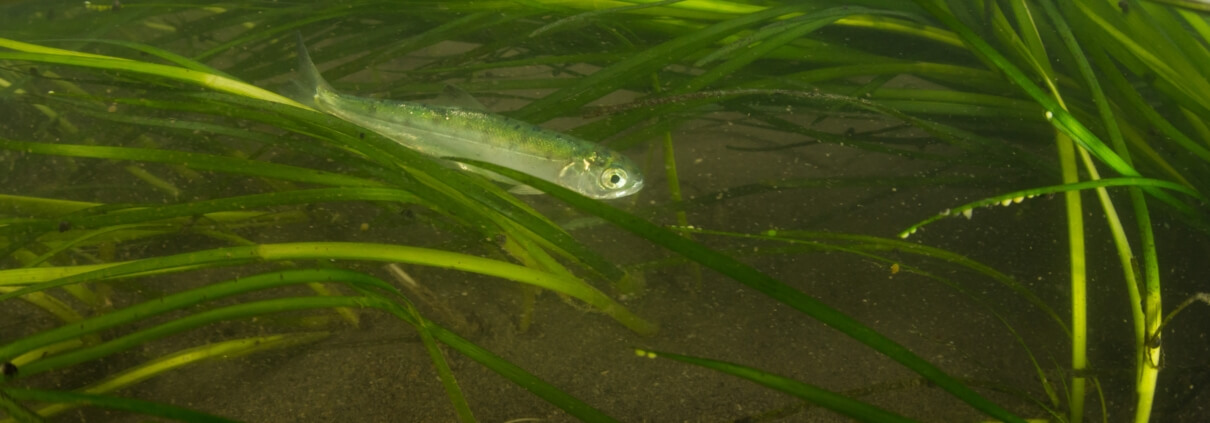New research assesses B.C. salmon vulnerability to habitat pressures
First-of-its-kind study shows that some local salmon populations are more vulnerable than others to freshwater habitat pressures, but improved data are needed to determine if these relationships hold for salmon habitats across B.C.
Many Pacific salmon populations in B.C. are declining, and the degradation of their freshwater habitats can negatively affect their prospects for recovery. Many freshwater habitats are becoming less productive due to an increase in the frequency of extreme rain and droughts, deforestation, and human activities.
Understanding the effects of habitat degradation on salmon productivity is essential for developing strategic plans for salmon recovery.
In collaboration with Fisheries and Oceans Canada (DFO), the Pacific Salmon Foundation’s Salmon Watersheds Program has undertaken an initial study to assess the relationships between habitat degradation and Pacific salmon population trends in B.C. This first-of-its-kind study, published in Ecological Indicators, uses province-wide datasets on freshwater habitat pressures to better understand the links between habitat and salmon populations to help inform conservation planning.

The results identify a negative trend in salmon abundance, thus confirming that many Pacific salmon species across B.C. are in decline.
The assessment also indicates that some salmon populations are more vulnerable than others to freshwater habitat pressures.
However, the relationships between salmon trends and habitat pressures are less clear at the provincial scale. While the research did not find strong evidence for relationships between Pacific salmon population trends and freshwater habitat pressures across the province, the study highlights the importance of considering the diverse and complex responses of salmon population to habitat change that occur at more localized scales.
“Salmon populations display complex responses to habitat disturbances. This needs to be considered in restoration and recovery approaches in order to enhance biodiversity outcomes,” says Dr. Steph Peacock, Salmon Watersheds Program analyst and lead author of the paper. “Our future research efforts will focus on improving data availability and obtaining finer-scale information that may allow us to eventually quantify the links between habitat pressures and salmon population responses.”
The study uses data on salmon population trends and freshwater habitat pressure indicators from the Pacific Salmon Explorer, an online data visualization tool developed by the Salmon Watersheds Program. The platform is one of the most comprehensive sources of publicly-available information on salmon in B.C. and currently includes data on 90 per cent of salmon across the province.
“The Pacific Salmon Explorer is a living tool that helps make sense of the highly complex relationships between salmon populations and habitat pressures. This research demonstrates a tangible example of how data from the Explorer can be used to help inform salmon conservation and management measures,” says Dr. Katrina Connors, director of the Salmon Watersheds Program.
About the study
- The study calculates the trend in spawner abundance for 3,689 unique salmon populations, covering all five species of Pacific salmon throughout B.C.
- The authors relate the trends in spawner abundance to 10 habitat pressure indicators, including the percent riparian zone disturbed, the density of forestry and non-forestry roads, and the percent watershed area impacted by agriculture and urban development.
- The study tests for relationships between the trend in spawner abundance and these habitat pressure indicators, accounting for shared variation among salmon populations. The researchers identify which salmon populations would be most vulnerable to declines if habitat pressures were to increase above current levels of disturbance.



